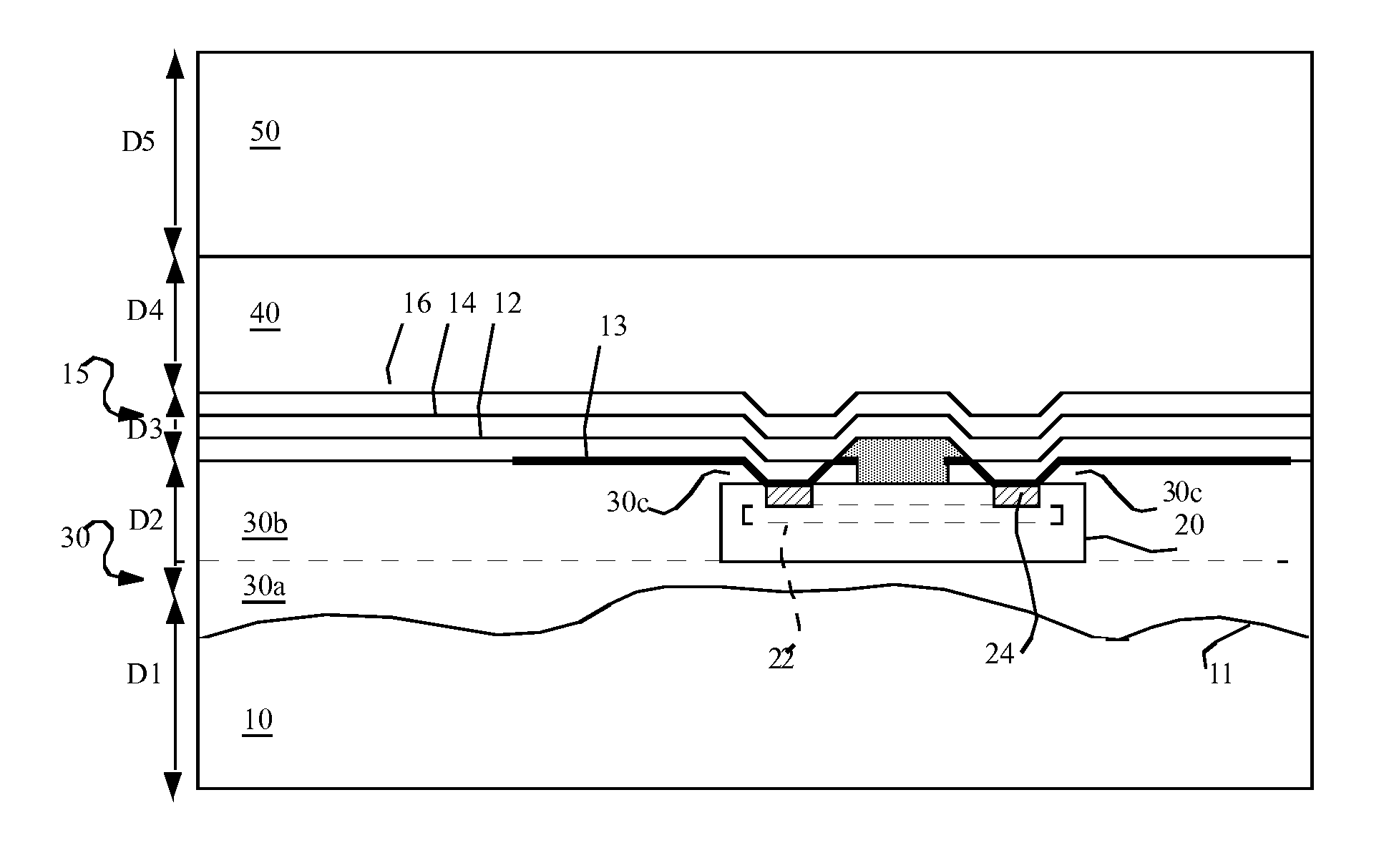Flexible OLED display with chiplets
a technology of oled display and chiplet, which is applied in the manufacture of electrode systems, discharge tubes/lamps, and discharge tubes/lamps, etc., can solve the problems of non-uniform electrical performance and visual appearance of displays employing such materials, low performance of thin-film transistors made of organic materials (otfts), and less electrical performance of display devices. achieve the effect of improving flexibility, improving electrical performance and simplifying structur
- Summary
- Abstract
- Description
- Claims
- Application Information
AI Technical Summary
Benefits of technology
Problems solved by technology
Method used
Image
Examples
Embodiment Construction
[0024]Referring to FIG. 1, a flexible emissive device 1 includes a flexible rough substrate 10 having a rough substrate surface 11. A display area 21 is defined over the flexible rough substrate 10 (FIG. 3). An organic low-temperature adhesion layer 30 is formed on the rough substrate surface 11, at least a portion of the organic low-temperature adhesion layer 30 having a thickness D2 greater than or equal to 5 microns. A plurality of chiplets 20 are adhered to the rough substrate surface 11, each chiplet 20 having one or more connection pads 24 and the plurality of chiplets 20 distributed in the display area 21. A plurality of patterned bottom electrodes 12 are formed over the organic low-temperature adhesion layer 30 in the display area 21, each bottom electrode 12 is electrically connected to a connection pad 24 of one chiplet 20. One or more layers 14 of light-emitting material are formed over the bottom electrode 12 and a top electrode 16 is formed over the one or more layers 1...
PUM
 Login to View More
Login to View More Abstract
Description
Claims
Application Information
 Login to View More
Login to View More - R&D
- Intellectual Property
- Life Sciences
- Materials
- Tech Scout
- Unparalleled Data Quality
- Higher Quality Content
- 60% Fewer Hallucinations
Browse by: Latest US Patents, China's latest patents, Technical Efficacy Thesaurus, Application Domain, Technology Topic, Popular Technical Reports.
© 2025 PatSnap. All rights reserved.Legal|Privacy policy|Modern Slavery Act Transparency Statement|Sitemap|About US| Contact US: help@patsnap.com



